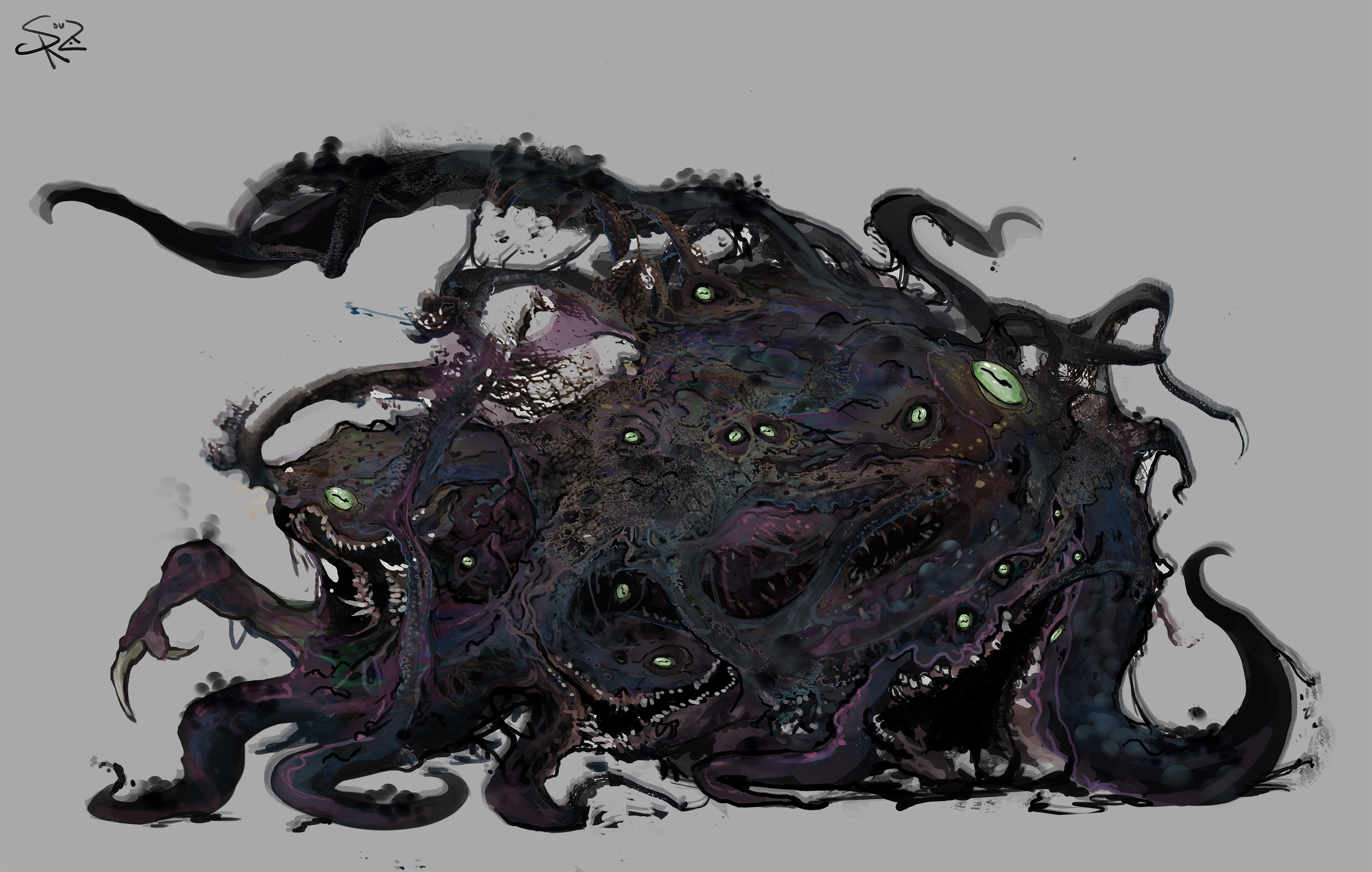Kal
Whispers


Depicted above are a typical Pylantian female and a statue of a typical Pylantian male.
OUT OF CHARACTER INFORMATION
The origins of the Pylantians are shrouded in myth - there is evidence to suggest that they could have evolved on their homeworld, but the scarcity of close relatives and preserved ancestors is enough to cause many to suspect an artificial origin. Such suspicions are reinforced by the extreme nature of their sexual dimorphism, though it is worth noting that there are a few comparably unusual species on their homeworld.
Whatever the truth may be, they went through an agricultural revolution some eight thousand years ago and began forming 'proto-nations' about six thousand years ago. Owing to the unusual lack of inter-group conflict (though there were certainly arguments, misunderstandings, and even the odd skirmish), their societies and shared knowledge developed steadily, but not necessarily quickly.
In 855 ABY, a few decades after Pylantian scholars first picked up transmissions from other civilisations, first contact was made.
Instead of the diplomatic meeting they had hoped for, it took the place of a crashlanding in a remote region. Before the government could respond, a family of farmers approached the crashed vessel, having mistaken it for an experimental airship of some kind. The first few seconds of contact were peaceful but as the male farmer was joined by his daughter, the humanoid spacers panicked and opened fire.
Despite this early tragedy, contact with broader galactic society was established soon thereafter - though the incident was not forgotten, nor was the news of genocidal aliens and sundered worlds taken lightly. As it turns out, the Galaxy is a far deadlier place than was hoped.
There are certainly some who have begun to wonder whether reaching for the stars was a terrible mistake.
- Intent: Create a species with some unusual sexual dimorphism, as requested.
- Image Credit: Shoggoth by Halycon450 and David by Michelangelo (Image Source).
- Canon: N/A
- Permissions: N/A
- Links: Sexy Dimorphism
- Name: Pylantians
- Designation: Sentient
- Origins: Pylos Satnik (Generic Unsubbed Homeworld)
- Average Lifespan: Between seventy and one hundred and ten, depending on available healthcare.
- Estimated Population: Planetary; small exclaves notwithstanding, they mostly stay on their Outer Rim homeworld.
- Description: The Pylantians are a species best known for their extreme sexual dimorphism, the unusual genetic makeup that causes said dimorphism (while males are visually near-human, the species has no proven connections to other sentients), and their harmonious society.
- Breathes: Type I and certain Type II atmospheres.
- Average Height of Adults: 1.85 metres (Male) | 1.3 metres (Female)
- Average Length of Adults: Human Equivalent (Male) | 3 metres (Female)
- Skin Colour: Males can be found in 'all the normal human shades' and may more rarely have metallic-looking skin. Females tend towards an unusual mixture of black, brown, purple, and grey, with the dominant colour and mixture thereof varying between individuals and ethnicities.
- Hair Colour: Males have soft and lush hair in a variety of colours. Females are entirely hairless.
- Distinctions: Pylantians are defined by sexual dimorphism extreme enough that many biologists suspect their natures to be artificial. Males of the species could be categorised as near-humans, albeit unusually attractive, chronically statuesque near-humans. Females resemble blobs of monstrous goo sporting pseudopods and eyes aplenty. Males age exceptionally gracefully, as do (allegedly) females.
- Races: Pylantians of either gender are carriers of significant genetic data that remains dormant, but can be passed on to offspring of the opposite gender. As a result, children take after both parents despite the extreme nature of their sexual dimorphism. Below are listed some examples of ethnic groups - in practice, the lines are largely blurred due to modern transportation and a lack of ethnic conflict.
- Arctic Pylantians are a relatively small minority known for their piercing blue eyes (in both sexes), silvery skin (in males), and white hides (in females). Females in particular blend in well with their snowy native regions. Their rarity as a distinct group is owed partially to low historical population numbers (their native regions are rather barren) and frequent interbreeding with other groupings.
- The Sashkatros are a culturally (but not genetically) distinct subgroup known to cultivate a fondness for exploration and travel. In the past they often served as travelling merchants and neutral intermediaries - they are by far the group most likely to be found off-world.
- The Loodd are the largest cultural and ethnic group and the ones who first developed organised agricultural practices. They expanded primarily by sharing their knowledge and are considered to be a melting pot in every sense of the word. The wholly voluntary nature of this state-building left a variety of small tribes and micronations as independent polities, many of which remain to this day.
- Bright Pylantians are, as the name indicates, unusually bright. Literally. Both sexes tend to be mildly bioluminescent and females have unusually bright hides - often in shades of red and purple. They originate from a particularly hostile continent and have historically behaved unusually violently (by Pylantian standards) as a result. As the threats posed by hostile fauna have been reduced by the tools available to modern society, these violent tendencies have begun to fade; even historically, Pylantian-on-Pylantian violence was rare.
- Force Sensitivity: Standard
- Harmonious Existence: Pylantians have not evolved to compete with their own kind for resources; they tend to work well together even in difficult circumstances and as a result generally live long, happy lives - even in times of relative scarcity.
- Sexual Dimorphism: Pylantians exhibit a particularly extreme form of sexual dimorphism. They make full use of each other's strengths - a female's pseudopods are well-suited to precision labour, for example, while males have an easier time using standardised tools and protective clothing. Unfortunately, offworlders often react negatively to certain aspects of this. Especially the appearance of the females.
- Noncompetitive: Pylantians, while both strong and unified, are mentally and culturally ill-suited for the violent conflicts that plague the galaxy. While not incapable of self-defence, they are peaceful by nature and have nonexistent martial traditions.
- Diet: Biologically omnivorous, but primarily herbivorous.
- Communication: Pylantians use a variety of languages, most commonly the Common Tongue (a sort of linguistic gestalt first developed by nomad merchants belonging to the Sashkatros). About forty percent of the population (and sixty percent of young adults) speak Basic.
- Technology Level: Below Standard; until fairly recently (on a planetary scale), Pylantian technology had reached the industrial age but was incapable of reaching space let alone traversing interstellar distances. Compared to a typical civilisation, the Pylantians had advanced medical and agricultural methods, adequate transportation, and all-but nonexistent military technology. Their industrial output remains rather low.
- Religion/Beliefs: Pylantian society is divided between a handful of faiths and secular philosophies, many of which have converged in one or more areas following the encounter with extraplanetary life. Most of the faiths are polytheistic in nature and feature benevolent creators that made the Pylantians then departed the world - whether they left instructions and what those instructions were is a point of contention.
- General Behaviour: Pylantians are typically monogamous and generally have fairly few children per family; children normally live with their parents until adulthood and occasionally even longer, though cultural and individual exceptions do exist. They primarily subsist off of a variety of grains grown on the surface, high-protein mushrooms, and a selection of 'edible flowers'. Pylantians normally go through a lengthy process of courting before forming long-term relationships - cultural differences exist, but either sex is normally free to initiate.
- Interspecies relationships are rare, but not unheard of, with some homosexual males finding themselves attracted to near-humans (of either sex - they all look 'vaguely male'). Heterosexual females may be attracted to near-humans, but the feeling is rarely mutual.
- Personal grooming is important to most Pylantians, though the efforts of the females usually aren't noticed or appreciated by other species; females are known to take ooze baths to maintain the slipperiness of their hides (a sign of cleanliness and good health!), paint their pseudopods in bright colours (the patterns often have cultural significance), and wear metallic rings around their various eyes.
The origins of the Pylantians are shrouded in myth - there is evidence to suggest that they could have evolved on their homeworld, but the scarcity of close relatives and preserved ancestors is enough to cause many to suspect an artificial origin. Such suspicions are reinforced by the extreme nature of their sexual dimorphism, though it is worth noting that there are a few comparably unusual species on their homeworld.
Whatever the truth may be, they went through an agricultural revolution some eight thousand years ago and began forming 'proto-nations' about six thousand years ago. Owing to the unusual lack of inter-group conflict (though there were certainly arguments, misunderstandings, and even the odd skirmish), their societies and shared knowledge developed steadily, but not necessarily quickly.
In 855 ABY, a few decades after Pylantian scholars first picked up transmissions from other civilisations, first contact was made.
Instead of the diplomatic meeting they had hoped for, it took the place of a crashlanding in a remote region. Before the government could respond, a family of farmers approached the crashed vessel, having mistaken it for an experimental airship of some kind. The first few seconds of contact were peaceful but as the male farmer was joined by his daughter, the humanoid spacers panicked and opened fire.
Despite this early tragedy, contact with broader galactic society was established soon thereafter - though the incident was not forgotten, nor was the news of genocidal aliens and sundered worlds taken lightly. As it turns out, the Galaxy is a far deadlier place than was hoped.
There are certainly some who have begun to wonder whether reaching for the stars was a terrible mistake.







